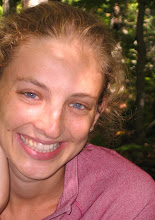 Current chief curator of drawings at the New York Museum of Modern Art and former curator of the Museum of Contemporary Art in Los Angeles, Connie Butler is the woman behind WACK!: Art and the Feminist Revolution, the newest exhibition to focus on the work of feminist artists both in the United States and internationally. Unlike Global Feminisms, an earlier exhibition at the Brooklyn Museum that concentrated on art made since 1990, WACK! deals with the period 1965-80. Also unique to WACK! is the wide range of artists showcased in the museum: over four hundred works in all media by 120 artists, collectives, and collaborations.
Current chief curator of drawings at the New York Museum of Modern Art and former curator of the Museum of Contemporary Art in Los Angeles, Connie Butler is the woman behind WACK!: Art and the Feminist Revolution, the newest exhibition to focus on the work of feminist artists both in the United States and internationally. Unlike Global Feminisms, an earlier exhibition at the Brooklyn Museum that concentrated on art made since 1990, WACK! deals with the period 1965-80. Also unique to WACK! is the wide range of artists showcased in the museum: over four hundred works in all media by 120 artists, collectives, and collaborations.In this exhibition, Butler has brought together a wide range of international women artists who exemplify the issues and questions raised during the heat of the women’s movement in art. In the title, Butler speaks of a singular feminist revolution, however the work of these different artists highlights the complexity of the notion of a “feminist artist” and reminds us that multiple revolutions were going on simultaneously. While someone like Faith Wilding worked on her Crocheted Environment (1972), giving new meaning to crochet work and distancing herself from what had been traditionally considered the proper materials with which to create art, other artists focused on their own body and performance as women artists. Orlan’s Le baisier de l’artiste, (1977), for instance, engages in a conversation about what it means to be a woman, more specifically a woman artist, and the social expectations projected onto women as both saints and prostitutes. In other work, issues of race and nationality take the forefront. For Lorraine O’Grady, being a Black woman artist in 1970’s United States called for action, and her questions and problems with the limitations of her role in art brought to life Mlle Bourgeoise Noire. On the other hand, national issues inform the overtly political work of Chilean artist Cecilia Vicuña, as she deals with the tragic coup that resulted in the death of Chilean President Salvador Allende in 1973.
In addition to showcasing different feminisms and feminist art trends, the exhibit also brings up the issue of identity politics in respect to the extent to which artists themselves identify as feminist artists. Take, for instance, artist Marina Abramovic, who has repeatedly refused to be considered a feminist artist. Her work, however, is on exhibit at WACK!. While many of the artists at P.S. 1 have explicitly identified with feminist movements and taken clear political stances in regards to women’s rights, a lot of the work on exhibit focuses emphatically on questions relating directly to art: medium, form, subject, etc. In this sense the exhibition itself becomes an arena to ask questions about art, aesthetics and politics. For exactly this purpose, P.S. 1 has organized a useful series of programs and events that go with the exhibition, such as the installation organized by the feminist genderqueer artist collective LTTR, in which people come together to talk about feminist aesthetics, art, identity politics, and what feminism means for different people.
Overall, WACK! offers an extensive space for discussing questions of feminism(s), politics and art, both literally, (all three floors of the ex-public school are dedicated to the exhibition) and metaphorically, as each artist deals with different ideas and concerns. At the same time, bringing the works of so many important and lesser known artists together is a great contribution to establishing the radical and influential contribution of work by women artists in the 1970’s. Regrettably, Butler’s decision to organize the exhibition thematically does not always work so well, probably because the theme of each grouping of works is never made explicit to the visitor. Along the same lines, it is unfortunate that no context is provided for either the artists or the works themselves in the rooms where they are exhibited, especially for some of the more conceptual pieces. The lack of information, however, is somewhat countered by the incredible work invested by Butler in bringing together such an impressive collection of works. With irony and playfulness, as well as through anger and violence, WACK! presents an important occasion to review work that has revolutionized how we think about art today, making a trip to Long Island City especially attractive.
P.S. 1 MoMA
February 14 - May 12, 2008
http://www.ps1.org/

No comments:
Post a Comment